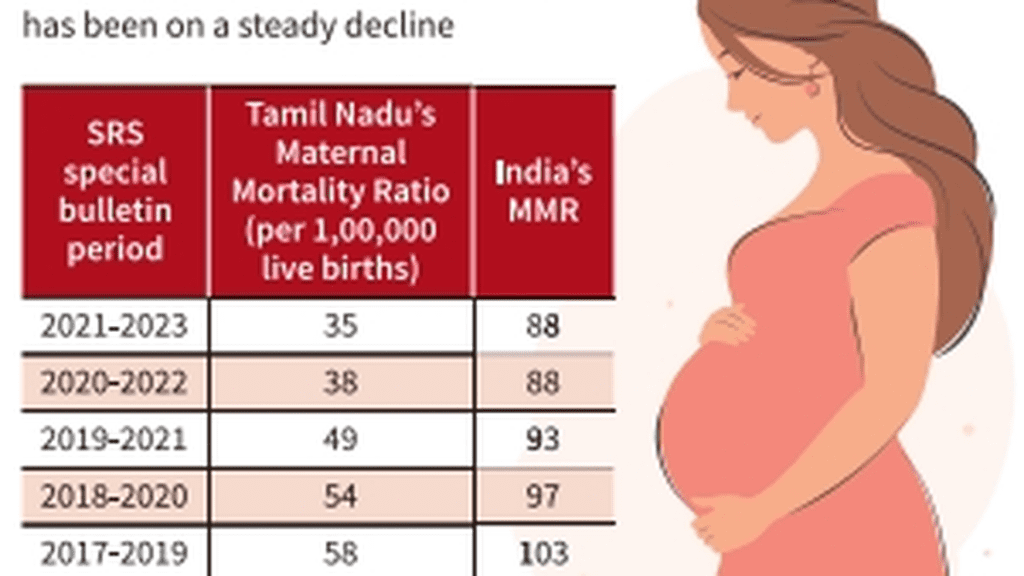On the cusp of a demographic transition
On the cusp of a demographic transition
(In the weekly Health Matters newsletter, Ramya Kannan writes about getting to good health, and staying there. You can subscribe here to get the newsletter in your inbox.)
It’s true that we haven’t really prepared for demographic transition.s As the country moves ahead and progresses in health care, besides simultaneously working on stabilising fertility at replacement level, there are clear signs of a demographic transition in some parts of the country. These transitions come with issues that we will now have to wrestle with anew. Obsessed as we have been with our burgeoning population levels, and the need to offer health care services to all, we have not quite accounted for what happens when we cross the bridge.
In Kerala, where the bridge has been crossed effectively a while ago, the first interesting fall out of this demographic transition is manifesting.
C. Maya brings to our attention a fascinating development: In Kerala, declining fertility levels are pushing up maternal mortality rate. Kerala’s maternal mortality ratio, currently the lowest in the country at 19 per one lakh live births, is now climbing steadily, much to the consternation of the health department. And the reasons for the increase may be beyond the control of officials.
Except during 2020-21, when Kerala lost many mothers to COVID-19, the State has consistently maintained a firm grip over maternal mortality. Ironically, the State’s MMR is now spiking not because more mothers are dying in Kerala, but because there are fewer child births than ever in the State.
The State, which used to have an average of 5-5.5 lakh live births annually, has now hit an all-time low of 3,93,231 births, according to latest data of the State’s Department of Economics and Statistics. The Health Department puts live births in the State between 3.4 lakh and 3.9 lakh currently. And it is this dip in the denominator that is pushing the State’s MMR up and not necessarily an actual spike in maternal deaths. Hit on the link for more, we also promise to bring you updates if any.
Let’s get this out of the way. The unnatural buzz around HMPV may have just quieted down, at least for the time being. We would like to think we have a role to play in this, in busting myths, both with reporting and with a webinar organised for readers.
Bindu Shajan Perappadan records: No report of any unusual outbreak pattern for HMPV, says WHO
We also reported that the Clinical Infectious Diseases Society sent out a note allaying fears: Not a new virus, HMPV detection has improved due to heightened surveillance, better diagnostics
The webinar was held as part of the Healthy India, Happy India series on preventive health care. Former WHO Chief Scientist Soumya Swaminathan and Bernhard Schwartlander, former WHO representative in China came together to clarify facts and dispel myths on HMPV, they also urged health professionals to communicate proactively to avoidthe spread of concerning misinformation. The video is available, in case you missed it, in a link in the article above.
The natural link now, thanks to the panic caused by misinformation on HMPV harking back to the COVID pandemic, is this article: Forgotten but not gone: Covid keeps killing, five years on. Around 777 million Covid cases and more than seven million deaths have been officially recorded since the first infections emerged in December 2019, according to the WHO.
Staying on the WHO and pandemic, it might be pertinent in this news letter to record that not much has changed since the pandemic, giving truth to the aphorism that the more things change, the same they remain. The WHO has sounded the alarm over pandemic readiness as global disparities persist. “If the next pandemic arrived today, the world would still face some of the same weaknesses and vulnerabilities,” WHO chief Tedros Adhanom Ghebreyesus said.
Since we are on the infectious diseases track, there were reports this week that China, which had marked a muted 5th anniversary of first Covid death, had also discovered a cluster of new mpox strain.
This week, we had an unexpected sports focus, with Dr. C. Aravinda writing on Understanding the health threats to athletes from doping. In addition to the performance-enhancing capacity of these drugs, there is also the health care angle to take care of, he says. These drugs have a number of side effects that have an impact, both short term and long term on the human body. Dr. Lakshmi Sundar brings to play a very important part of what has come to dominate discussions in the public arena: the sudden cardiac death syndrome. Periodic screening is required to avert sudden cardiac death among athletes. During vigorous physical activity, there is a substantial increase in sympathetic nervous system activity; in predisposed individuals, this surge can trigger arrhythmias and potentially lead to sudden cardiac arrest, she says. Periodic testing is the only way to avoid this, she adds. Sahana Mira S. spent a few hours in the medical tents of the recently-held Chennai Marathon that kept marathon runners out of the danger zone.
Our gender focus was served well this time. I quote experts on insisting that only medical reasons should guide decisions to perform hysterectomies. Quoting a recent study based on National Family Health Survey figures, which said that women at two extreme ends of the education and income spectrum tend to get hysterectomies more than any other group – the broad point the article makes is that, every decision to go in for a hysterectomy should have a proper set of medical reasons.
Vid Karmakar writes on tackling inequity in cervical cancer prevention. Despite being one of the most preventable and curable cancers, if detected early, the cervical screening rate in India is dismal at 2%, and more effort should be made to make sure all women have access to diagnosis and treatment, besides prevention of cervical cancer.
Meanwhile in West Bengal, Shiv Sahay Singh writes that one woman died and three women remain critical after being given expired intravenous fluids in West Bengal.
What are the minimum number of tests that should be available at government healthcare facilities? ICMR releases a draft list that should be available at various diagnostic centres. Aimed at bolstering diagnostic services across the country, this revised list seeks public feedback before its final notification. Members of the public can send in feedback on or before January 15, 2025.
Some good news on the horizon as the Indian govt brings in accessible, affordable anaemia detecting tech that would help even those who cannot afford regular tests.
The prevalence of anaemia has remained static in India for the last two decades. First, with no national surveys, we do not know the cause of anaemia in India. This is presumed to be iron deficiency, resulting in policies to improve dietary iron intake through fortification and supplementation. In this context, do read Anura Kurpad and Harshpal Singh Sachdev’s article on Why public health nutrition policies need novelty, precise targeting.
It’s not as if we can close without some reference to what causes NCDs: Millions of diabetes, heart disease cases globally linked to sugary drinks. A new study estimates that in 2020, 2.2 million new cases of type 2 diabetes and 1.2 million new cases of cardiovascular disease occur each year globally due to consumption of sugar-sweetened beverages, representing 9.8% and 3.1%, respectively, of all incident cases. The study estimated sugar-sweetened beverage-attributable type 2 diabetes and cardiovascular disease burdens across 184 countries in 1990 and 2020.
If it is not about the gene, it is probably about the protein. This week’s tailpiece is a story by Barbara Jacquelyn Sahakian,Christelle Langley,Chun Shen and Jianfeng Feng on how Loneliness and social isolation are linked to specific proteins. New research suggested that loneliness may lead to an increase in the levels of five specific proteins expressed in the brain; all the proteins identified as related to loneliness were “positively associated”, meaning that people who feel lonely tend to have higher protein levels compared to those who do not feel lonely. Are you wondering what you can do about this? Researchers said the study demonstrates how important it is to connect with others through social activities, for example volunteering or team sport. This can reduce the effects of social isolation and loneliness on the underlying biological processes important for health outcomes.
We have a fair few explainers this week, do click on the links below for more:
C. Aravinda writes that the National Rural Health Mission was Manmohan Singh’s quiet revolution in healthcare
Zubeda Hamid asks the questions: Why does cancer get diagnosed late in India? And does having a government health insurance card help with faster treatment?
Sreedevi Jayachandran explains in an engaging manner: The distance between you and yourself: understanding depersonalisation disorder
Geetha Srimathi indicates that while the Nimesulide ban is yet another step toward saving vultures, the battle is far from over
Jacob Koshy writes: Is groundwater contamination high in India?
This one is on Medical negligence: Shifting focus from punishment to patient safety
D. Balasubramanian explains gene editing.
If you have a few moments, do also read:
Afshan Yasmeen says Karnataka writes to the Centre seeking adequate support for expanding health coverage to senior citizens above 70 years
Rahul Karmakar Beliefs could delay cancer screening and care in Meghalaya, study finds
Serena Josephine M. profiles a hospital department Where robotic surgeries offer better outcomes
Dr. R.V. Ramani writes on A vision for healthcare in India
D.P. Kasbekar An unlikely mystery: studies shed new light on how genes are made
R.C. Thampan on Medical education in India is at a crossroads; here’s a road map
Clinical trials of medicines often done in poor countries: Supreme Court
Experts seek affordable access to medicines for treating Spinal Muscular Atrophy
Centre writes to States, UTs to organise 100-day campaign on TB elimination in prison
Manufacturers of medical devices seek MRP monitoring of imported devices
For many more health stories, head to our health page and subscribe to the health newsletter here.








